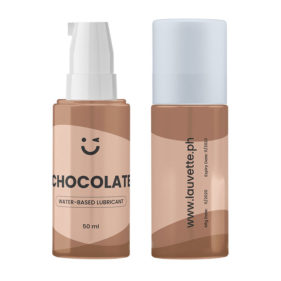
If you’ve been through or currently in a relationship, you’ve probably experienced feeling unloved at some point. Maybe it’s because they don’t flex you on social media, they didn’t give you a bouquet of flowers on your anniversary, or they didn’t try to help you when you need to fix something in your home.
Because you don’t get the expected actions or words you want in the relationship, you see your partner as someone who isn’t trying at all, despite their great efforts to make you happy. You may also end up beating yourself up for being “too demanding” because you’re not happy with the things that your partner does for you. However, most of the time, it isn’t you or your partner who isn’t at fault for this. The pain and dissatisfaction that you’re feeling stems from the lack of knowledge about the different types of love language.
If you want to bring and experience more fulfillment in the relationship, we highly recommend checking this in-depth guide. We will be talking about what a love language is, its origin, the five types, and things you should do to know your love language.
What is a Love Language?

A love language is a way we express and perceive love.
When we love someone, we typically do a set of activities that fall under a specific love language. And if our significant other does the things under our love language, we feel desired and loved. On the other hand, if your partner is doing something that isn’t within our love language, you may feel that it’s still not enough despite their great efforts.
This is why discussing each other’s love languages is essential in a relationship. It prevents miscommunication and closes the emotional gaps, forming a deeper and better relationship with your romantic partner.
-
₱2,695.00
-
₱7,530.00
-
Original price was: ₱4,745.00.₱4,270.50Current price is: ₱4,270.50.
-
₱895.00
The Origin of Love Language
The concept of love language was first introduced in 1992 through the book “The Five Love Languages: How to Express Heartfelt Commitment to Your Mate.” It was published by Dr. Gary Chapman, an American Author, radio talk show host, and a senior associate pastor at the Calvary Baptist Church.
After spending years of counseling couples, he discovered a pattern surrounding relationships woes. He noticed a miscommunication between each other’s needs, and if the specific needs weren’t met, it often led to conflicts. After checking all his notes and researching the pattern, it has resulted in the love language concept, wherein people often express and perceive love in five different ways.
Though Dr. Chapman didn’t have a background in psychology or sociology, his theory has been well-received by the public. The book sold 8,500 copies in its first year, about four times than its initial projection. It then doubled in the following year, selling 17,000 copies. By its fourth year, it had then sold 137,000 copies. This book is still well-received up to this date, as it has been on the New York Times Best Seller list since August 2009.
Types of Love Language
Dr. Chapman has established five ways we express and interpret love. Under his theory, it’s believed that people have 1 primary love language and 1-2 secondary love languages. Here are the different love languages and their respective examples.
1Words of Affirmation

This is one of the types of love language that is often used for movies and films, as it’s an effective medium of expressing romantic love.
Words of Affirmation is a love language that involves positive verbal communication. People who connect with this love language express and perceive love through compliments, romantic lines, and other forms of appreciation.
If this is your love language, you love…
- Giving and receiving sweet messages, whether in person or virtual.
- Giving and receiving compliments from your partner.
- Posting how much you love your partner through social media.
- Getting flexed in your partner’s social media accounts. For example, you went on a date, and your
- partner shared a photo of you with a romantic caption on it.
- Hearing your partner share the things they love about you with other people.
If this is your love language, you hate…
- Not getting genuine compliments from your partner.
- Receiving a “cringe” or “meh” reaction when you try to tell your partner how much you love them.
- Receiving insulting jokes from your partner, especially if it involves your appearance, interest, values, etc.
- Your photos weren’t shown on their social media, as if they’re trying to hide you from their friends and family.
-
₱9,500.00
-
₱5,700.00
-
₱12,600.00
2Acts of Service

This is one of the types of love language that is very subtle but is powerful for people who connect to it.
Acts of Service is a love language that involves doing something for someone to make their lives easier. If you see them being busy with work or schoolwork, you proactively try to lessen their load by helping them with other responsibilities, such as cooking their meal, helping out with the laundry, or even lining up for their bills.
On the other hand, when you see your partner go out of their way to help you with certain things, you feel deeply cherished and loved. You don’t take what they do for granted as you see it as an expression of love. That’s why you often thank your partner for their effort, either by words of affirmation or by helping them back.
If this is your love language, you love…
- Helping your partner with their simple chores and tasks, such as washing the dishes, cooking, vacuuming the house, calling the plumber, assembling a cabinet.
- Having a partner that helps you with your chores and tasks without needing to ask them.
- Being appreciated after helping your partner with their tasks.
- Showing your partner how thankful you were when they helped you with a certain task.
If this is your love language, you hate…
- Having a partner that doesn’t appreciate your help; someone who doesn’t even thank you after spending a whole day helping them out.
- Being with a partner that doesn’t want any help. If you try to lend a hand, they see it as more of an insult than a genuine offer.
- Having a partner who doesn’t try to help you, even if you’re already super stressed with your tasks.
- Being with a partner that does help but begrudgingly calls you out on it and implying that you’re lazy, full of excuses, etc.
- Having a partner only texts you “good luck!” instead of “is there a way I can help you?” when going through stressful tasks.
-
₱150.00
-
₱150.00
-
₱150.00
-
₱150.00
3Receiving Gifts

People who connect in this love language show and interpret love through gifts. Contrary to popular belief, people who are into this language aren’t materialistic nor measure the value of a gift through monetary value. They actually value thoughtfulness more than the gift’s price or practicality. They also highly appreciate people who give symbolic or homemade gifts, as it shows how much they mean to that person.
Now, even if receiving gifts is one of the types of love language that doesn’t resonate with you, this doesn’t mean that you shouldn’t gift your partner at all; don’t take this as an excuse. Gift-giving is still generally a great and thoughtful way to express your love to a partner.
If this is your love language, you love…
- Giving and receiving thoughtful gifts, such as handmade cards, love letters, a playlist filled with each other’s favorite songs, and more.
- Curating and creating the best gifts that hold sentimental value in your relationship.
- Surprising your partner and getting surprised with pasalubong (food treats or souvenirs).
- Getting acknowledged for your gifts and showing your appreciation for your partner’s gifts.
If this is your love language, you hate…
- Receiving last-minute gifts, such as a mug, towel, or anything that doesn’t fit your interests nor personality.
- Having a partner sees gift-giving as “greedy” or a “marketing ploy related to capitalism.”
- Getting a cold reaction from your partner after giving a thoughtful gift.
-
Original price was: ₱2,445.00.₱1,956.00Current price is: ₱1,956.00.
-
₱2,445.00
-
Original price was: ₱8,095.00.₱7,285.50Current price is: ₱7,285.50.
-
₱8,095.00
4Quality Time

As the name implies, this love language involves spending time giving and receiving full undivided attention to/from your partner. People who see quality time as their primary love language don’t necessarily need five dates a week; one date per week can do, as long as their partner is engaged and they’re doing something they both love. It’s all about the quality, not the quantity.
If this is your love language, you love…
- Having a partner who plans out dates and ensures that you’re both interested in the activities.
- Spending time with your partner without any form of distractions such as a smartphone or television.
If this is your love language, you hate…
- Having to constantly plan out your dates and seeing your partner not making any effort.
- Going on a date with your partner, only to see them on their phone throughout the date.
- Not engaging in the conversation, just leaving one-liner answers to all of your questions.
5Physical Touch

This is one of the types of love language shown on most shows and films, as it’s a clear sign of romantic love. Physical touch involves sensual and non-sensual forms of touching. People who connect with this love language love getting touched, caressed, kissed, massaged, cuddled, hugged, and other forms of meaningful touch. They love to express their love by demonstrating physical forms of affection and enjoy getting appreciation from it.
Now, if they don’t get touched as often as they would in their partner or if their partner rejects during a cuddle, hug, or kissing attempt, they may feel undesired and unloved.
If this is your love language, you love…
- Giving and receiving cuddles, hugs, kisses, holding hands, massages, and other forms of physical affection.
- You love being intimate with your partner.
- You just enjoy being with your partner most of the time, even if you’re not conversing or doing the same thing. For example, watching movies while holding hands or cuddling.
If this is your love language, you hate…
- When your partner feels iffy every time you try to be physically expressive with them.
- Being the only person who initiates intimacy in the relationship. You’re the only one who attempts to kiss, hug, or have sex with your partner.
- Having a partner that says yes to physical contact but isn’t engaging with it and doing it “just to get over with it.”
How to Find Out Your Love Language
Now that you’ve learned the five types of love language, you’ll probably have an idea now with your own primary and secondary love languages. But if you’re still having a hard time figuring it out, here are some quick tips to help you discover your ways to show and perceive love.
1List down the things that your partner did that you love.

Open your journal, then start listing the things that your partner does that you looooove so much. Do you love it when they cook your favorite meal? When they make love to you every Saturday night? Do you love the poem that they wrote about your first date? Do you like it when they help you out with vacation plans?
List them all, then arrange them, putting your most-loved activity or gesture at the top. Once you’re done listing the romantic activities, assess if the top five gestures fall under a specific love language.
-
₱2,299.00
-
₱5,395.00
-
₱2,445.00
-
₱4,745.00
2List down the things that your partner did that you don’t like.

After listing the things that you love about your partner, also take the time to list the things that your partner does that you don’t love. Do you hate it when your partner just plays games during your date? Are you sad every time your partner forgets to send sweet messages before bedtime? Do you feel iffy when your partner holds your hand every time you’re going out? By listing the things you don’t like, you’re getting a concrete picture of what your love language is.
-
₱4,745.00
-
₱12,645.00
-
₱3,995.00
-
₱2,975.00
3Try love language quizzes.

This isn’t the most effective tip on the list since the internet cannot fully know your heart’s desires, but hey, there’s no harm in trying! There are tons of love language kisses online. Just try a bunch of them and see if the overall answer resonates with you. Here are some recommended quizzes:
What’s Your Love Language? By 5LoveLanguages.com – This quiz is developed by the same team that created the original book “The Five Love Languages” by Dr. Gary Chapman. Click here to try the quiz.
What Is My Love Language? By MindBodyGreen.com – It’s pretty simple and only requires five minutes to answer. Click here to try the quiz.
Free 5 Love Languages Quiz by Lonerwolf.com – Same with the previous quiz, it’s quick and easy to answer. It also takes a more spiritual approach. Click here to try the quiz.
Takeaway
Finding your own and your partner’s love language is the key to filling your relationship’s physical and emotional needs. You may take so much effort in showing how much you love your partner, but if it doesn’t fall from your partner’s love language, they may not see the significance the same as you would perceive it.
So the next time you talk to your partner, we highly recommend taking the time to know each other’s primary and secondary love languages. Trust us, it’ll save you from tons of conflicts and heartbreaks.
-
₱285.00
-
₱99.00






























